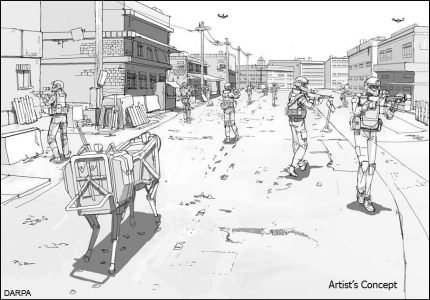Researchers add more core technologies to Squad X program
DARPA has announced plans to explore additional interest areas as part of a program to take tactical communications to the squad level.

Military researchers, who last year announced a program to extend situational awareness on the battlefield down to the squad level, are expanding their plans, adding a group of four core technologies to support the Squad X program.
Building off the previous announcement, DARPA is looking to explore four additional interest areas as part of its new Squad X Core Technologies (SXCT) program. The SXCT program seeks to remedy the challenge of providing small squads with real-time situational awareness and precision armaments technologies typically exclusive to vehicles by aiming to provide dismounted infantry squads with lightweight systems for awareness and adaptability in order to maintain the tactical advantage.
DARPA wants to integrate the communications technologies and capabilities present in vehicular and aircraft systems with smaller, ground-based squads. If successful, Squad X would likely support efforts such as the Army’s Warfighter Information System-Tactical, which is trying to do the same thing.
The four areas DARPA seeks to explore as part of the new SXCT program are:
- Precision engagement: Precisely engage threats out to 0.6 mile (1,000 meters), while maintaining compatibility with infantry weapon systems and without imposing weight or operational burdens that would negatively affect mission effectiveness
- Non-kinetic engagement: Disrupt enemy command and control, communications and use of unmanned assets at a squad-relevant operational pace (walking with occasional bursts of speed)
- Squad sensing: Detect potential threats out to 0.6 mile at a squad-relevant operational pace
- Squad autonomy: Increase squad members’ real-time knowledge of their own and teammates’ locations to less than 20 feet (6 meters) in GPS-denied environments through collaboration with embedded unmanned air and ground systems
DARPA sought information regarding the Squad X program, last year, looking to address similar challenges as SXCT. However, Squad X identified three separate focus areas, which included integrated access to and control of mobile sensors, including streaming video, a 3D common operating picture and the ability to organically locate and identify friendly forces and threat locations in near real time.




